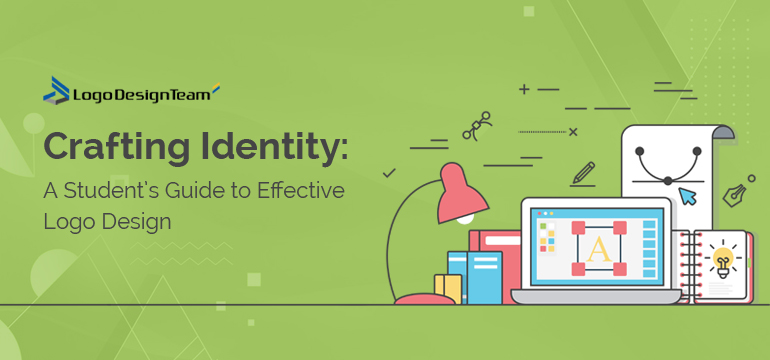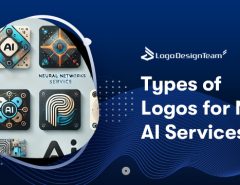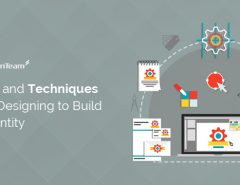In the dynamic world of branding, a logo is much more than just a graphic symbol; it’s a vital representation of a brand’s identity and values. Effective logo design is crucial in creating a lasting impression on the target audience and distinguishing a brand in a competitive market. For students delving into the field of graphic design, developing the skill to create impactful logos is essential. This article aims to serve as a comprehensive guide for students, offering insights into the art and science of logo design. From understanding the basics to exploring color psychology, this guide covers the key aspects of crafting an identity through effective logo design.

Understanding the Basics
A logo is the visual cornerstone of a brand’s identity, serving as a succinct representation of the brand’s ethos and purpose. Effective logo design is characterized by simplicity, memorability, and relevance. These elements are necessary to create a recognizable design that resonates with the target audience and will stand the test of time.
Understanding the history and evolution of logo design can also be enlightening for students. It provides context and shows how logo design has adapted to cultural and technological changes over time. For those students who might be more interested in the theoretical aspects of design than the practical execution, services like Writepaper can write your essay for money and assist in documenting these insights in a well-structured essay, allowing students to focus more on the creative process.

The Process
Effective logo design is a systematic process that involves several key steps. The first step is research, which involves understanding the brand, its values, its market position, and its audience. This research lays the foundation for the design and guides the creative process.
Next comes brainstorming and sketching. This is where ideas are generated and visually explored. Sketching allows for quick experimentation with different concepts and layouts. Once a promising direction is identified, the design is then digitized.
The final stages involve utilizing feedback and making revisions. Feedback, whether from clients, peers, or mentors, is invaluable as it provides fresh perspectives and insights that can significantly refine the design. Revisions are an integral part of the process, allowing designers to polish and perfect the logo, ensuring it aligns with the brand’s identity and resonates with its audience.
Start with a Research
Before the creative process begins, research is key. Understanding the brand, its values, target audience, and position in the market is crucial. This knowledge informs the design process, ensuring that the logo is not only aesthetically pleasing but also strategically aligned with the brand’s identity.
Methods of effective research include competitor analysis, which helps identify trends and gaps in the market, and audience profiling, which provides insight into the preferences and expectations of the target demographic. This preparatory step is essential in creating a logo that resonates with the intended audience and stands out in the market.
Conceptualizing Your Design
The conceptualization stage is where creativity comes into play. It involves brainstorming ideas, sketching initial designs, and refining these into a coherent concept. Originality is key in this phase; a unique logo will make a stronger impression and be more memorable.
Start with broad ideas and gradually narrow them down. Sketching by hand can be a great way to freely explore different concepts without constraints. This stage might involve several iterations as you refine your ideas into a more defined design. It’s important to remain open to different possibilities and not get too attached to a single idea early in the process.
Color Psychology in Logo Design
Color is a powerful tool in logo design, as different colors can evoke various emotions and associations. Understanding color psychology is essential in choosing a palette that aligns with the brand’s identity and communicates the right message.
For example, blue often conveys trust and professionalism, making it a popular choice for corporate logos. Green can signify growth and health and is often used by eco-friendly or wellness brands. Red, with its vibrancy and energy, can attract attention and evoke excitement.
Choosing the right color combination can enhance the logo’s impact. It’s not just about personal preference; it’s about what the colors communicate to the audience. The chosen palette should be tested across various mediums to ensure consistency and effectiveness in all forms of branding.
Typography in Logo Design
Typography in logo design plays a crucial role in conveying a brand’s character and values. The choice of font can dramatically alter the message a logo communicates. Custom typography is gaining more and more traction in the design world. This approach can significantly enhance brand recognition and set it apart from competitors. However, it requires careful consideration of legibility and brand alignment.
Balancing Elements in Logo Design
Creating a balanced logo design is about harmonizing different elements — typography, color, imagery, and shape — to form a cohesive whole. Each element should complement the others, with none overpowering the rest. This balance is crucial in creating a logo that is aesthetically pleasing and effectively communicates the brand’s message.
Consider the alignment and proportion of each element. For example, if the logo includes both text and an icon, they should be sized and positioned to complement each other. Additionally, the use of white space is vital in preventing the design from becoming cluttered or overwhelming.
Testing and Refining the Logo
Once a logo design is conceptualized, it’s essential to test its effectiveness. This can involve focus groups, digital surveys, or A/B testing to gather feedback on the design’s appeal, memorability, and relevance to the brand. This feedback is invaluable in refining the logo to better meet the brand’s needs.
Refinement may involve tweaking colors, adjusting typography, or altering the balance of elements. The goal is to create a logo that not only looks good but also resonates with the target audience and accurately represents the brand.
Adapting the Logo Across Various Media
A versatile logo performs effectively across various media and platforms. It should be adaptable to different sizes, from large billboards to small digital icons, and work well in both color and black and white. This adaptability ensures that the logo remains effective and recognizable in all its applications.
Creating responsive and scalable logo designs is a skill that requires foresight and creativity. The logo should maintain its integrity, whether it’s on a mobile screen, a website header, or corporate stationery. This versatility is a hallmark of a well-designed logo.
Final Takeaway
Effective logo design is a multifaceted process that combines creativity, strategy, and technical skill. It involves understanding the brand, conducting thorough research, and skillfully combining various design elements to create a cohesive and impactful logo. Students venturing into logo design should embrace this process as an opportunity to not only express creativity but also to contribute significantly to a brand’s identity and success.
Just as a well-crafted logo can define a brand’s identity, a well-written essay can significantly impact a student’s academic journey. Seeking assistance from the best essay writing service can be an invaluable step in ensuring academic excellence, much like a thoughtfully designed logo can elevate a brand’s presence in the marketplace. In both cases, the attention to detail, understanding of the subject, and skillful execution are what set the outcome apart.




